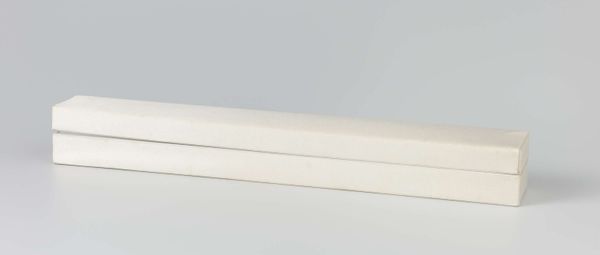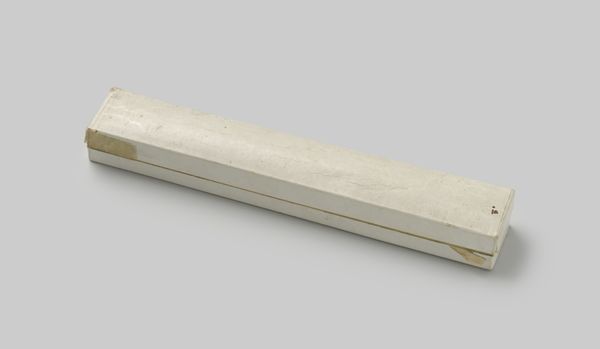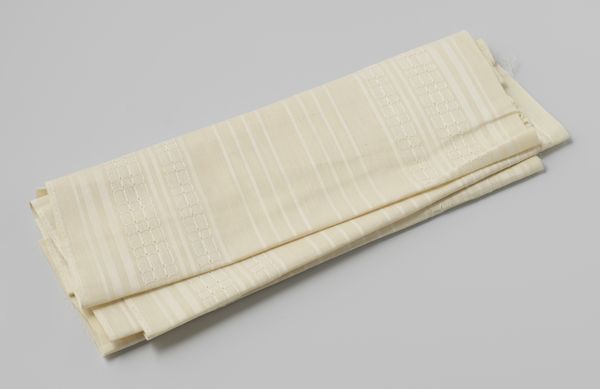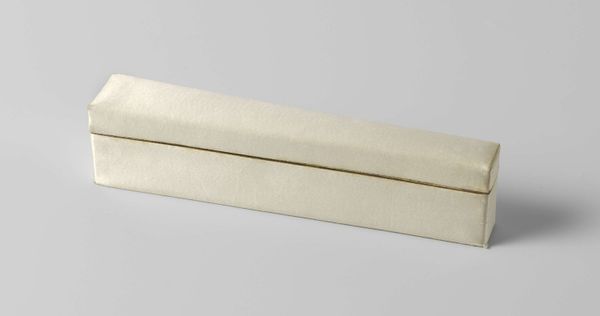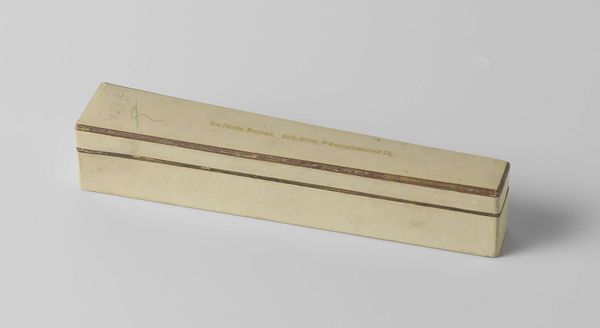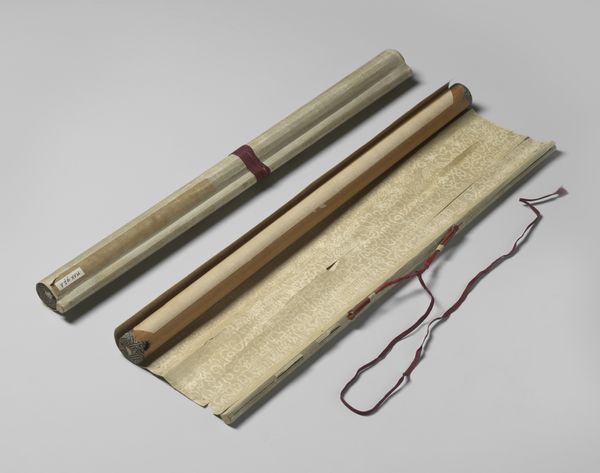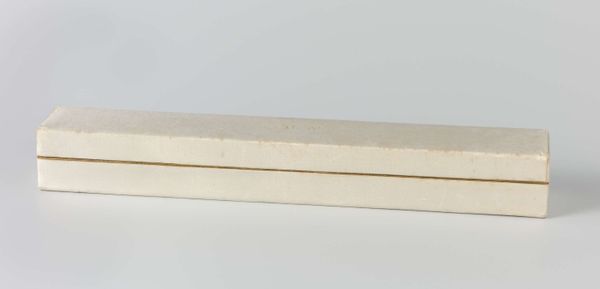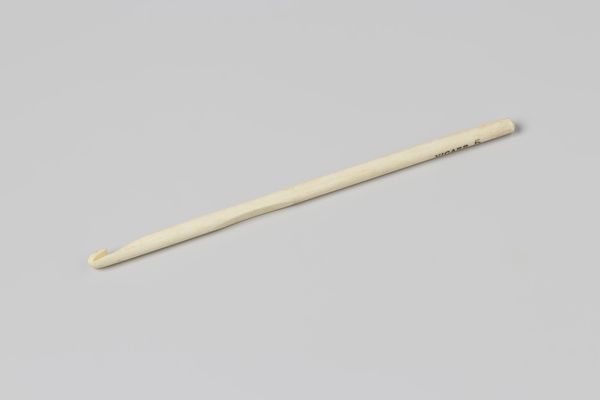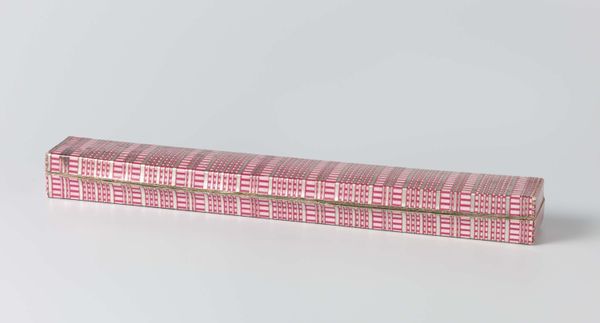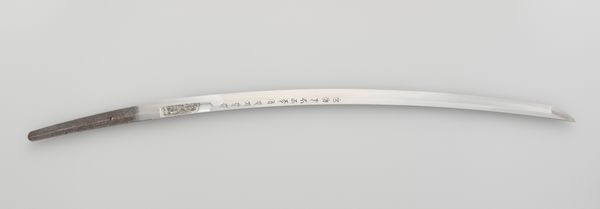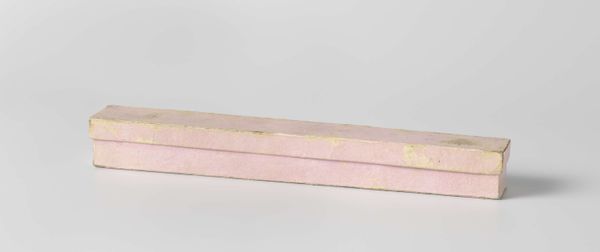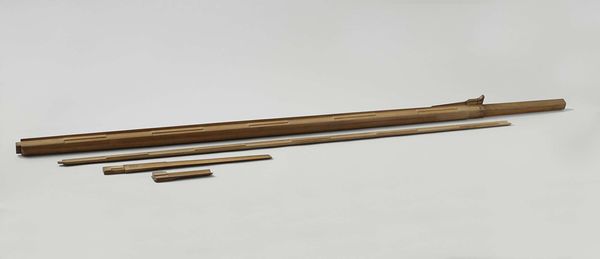
paper, photography
#
still-life-photography
#
landscape
#
paper
#
photography
Dimensions: height 74 cm, width 52.5 cm
Copyright: Rijks Museum: Open Domain
Editor: We're looking at "Vier passe-partouts voor vier hangrollen met landschappen," created sometime between 1850 and 1900 by Xiang Wenyan. The photograph is printed on paper. They’re just… tubes. Neatly arranged, but still rather ordinary. How should we approach analyzing it? Curator: Let us begin by examining the arrangement of these cylindrical forms. The artist, Wenyan, directs our gaze through a calculated interplay of lines and planes. Note the subtle shift in each cylinder's position relative to the others. The photograph itself acts as a kind of still life, where the formal qualities of shape, texture, and composition take precedence over any immediately apparent narrative. How might the seemingly mundane nature of the forms contribute to a deeper reading? Editor: Perhaps the simplicity is the point? I am still struggling to find depth here. Curator: Precisely. Consider the nuanced textures – the paper, the faint markings. They suggest layers of history, use, and perhaps even value, hinting at cultural rituals around the preservation of art. The off-white tonality promotes quiet contemplation. Wenyan also frames this work using stark lighting, a critical formal choice. Would you agree that the high-key lighting adds emphasis? Editor: I do see that, and the pale color scheme overall contributes to the subtlety, now that I consider the composition of light in this photo. The composition feels deliberate now, even elegant. Curator: I concur. The artist challenges us to locate meaning not in representational content, but in the artful presentation of material and light itself. It serves as a meta-commentary on landscape art and modes of appreciating landscapes by highlighting that they’re rolled and hung in specific ways to focus your visual attention. This transforms how we appreciate their form, composition and texture of its base components. Editor: Thank you! This exploration emphasizes the transformative role of form and light.
Comments
No comments
Be the first to comment and join the conversation on the ultimate creative platform.
